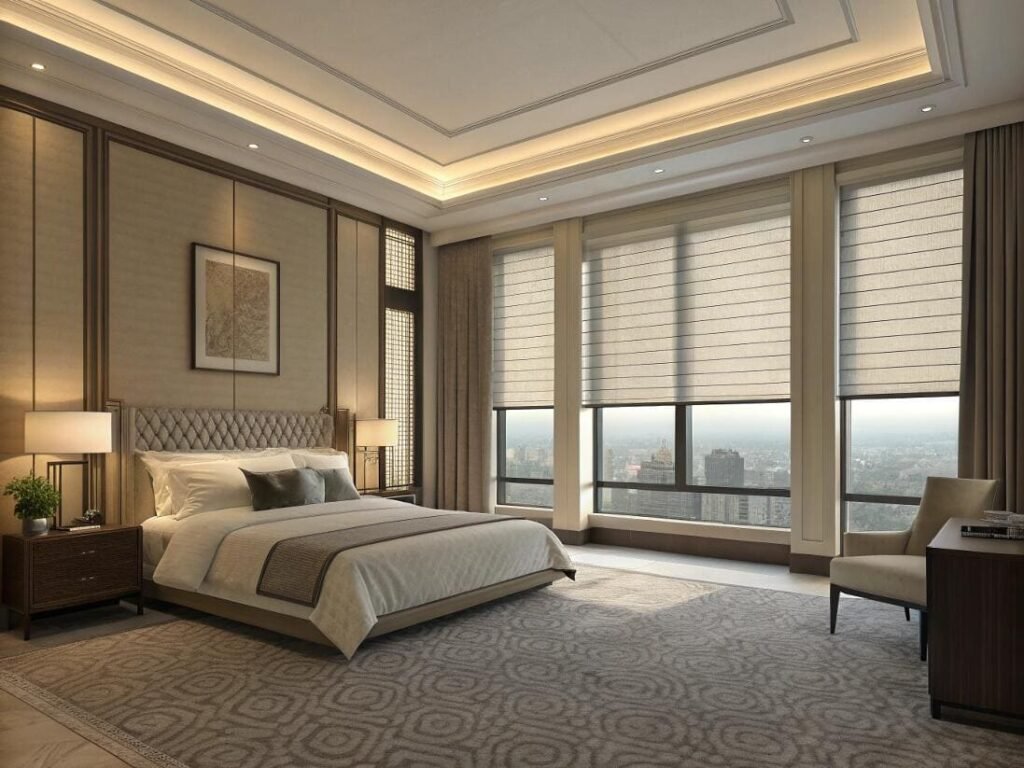Your clients complain about street noise, loud neighbors, and barking dogs. You offer them standard thick blinds, but the noise persists, leaving them frustrated and questioning your expertise.
To effectively reduce noise, you need blinds that do more than just block light. The best solutions use a combination of material density, trapped air pockets, and a complete seal around the window frame.
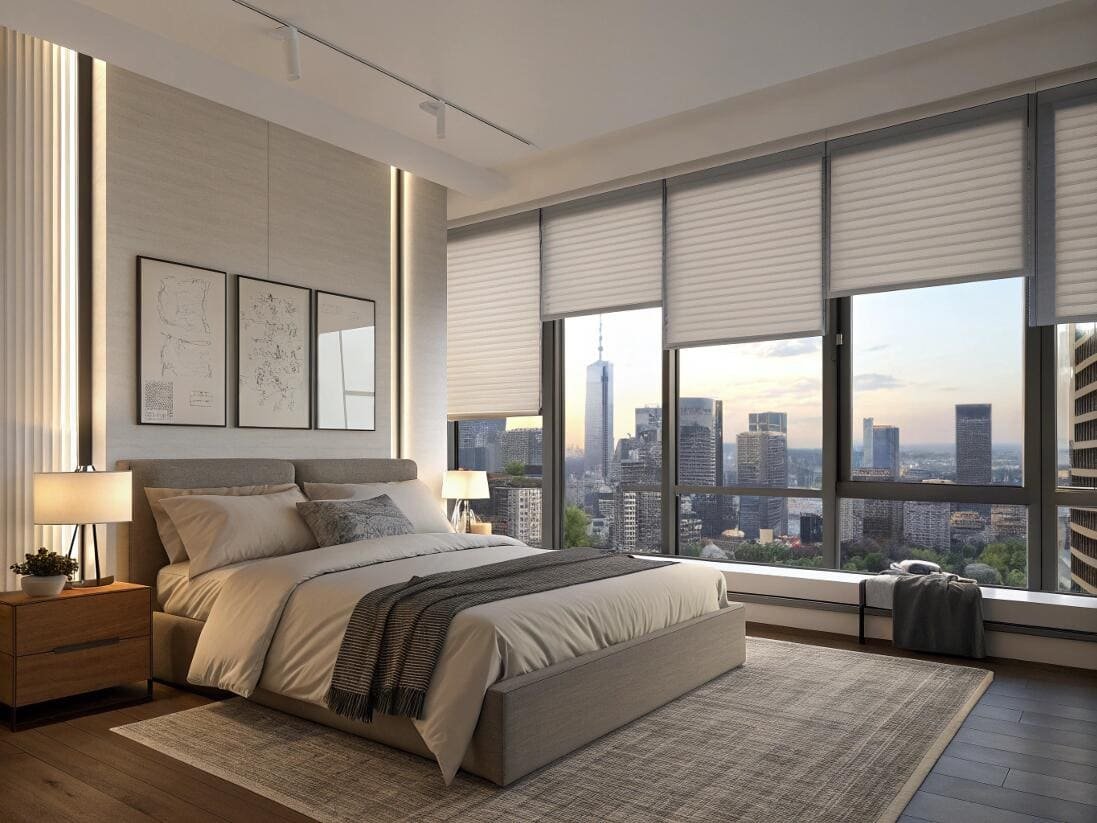
Noise is one of the biggest complaints I hear from project contractors and their clients. Emma, an interior designer I work with, often has projects in busy urban areas. Her clients want a peaceful oasis, but a standard window treatment just can't deliver that. For years, people thought throwing thick fabric at the problem was the solution. But the real answer lies in acoustic science, which is simpler than it sounds. It comes down to three things: density, air space, and sealing. Once you understand how these work together, you can specify a solution that delivers real, audible results.
Which blinds are best for soundproofing?
You want to offer a real solution, not just another blind. How do you choose a product that you know will make a noticeable difference for your client?
Cellular (or honeycomb) shades, especially double-cell versions, are the best for soundproofing. Their unique pockets trap air, which disrupts and absorbs sound waves. Heavy fabric Roman shades are a good second choice.
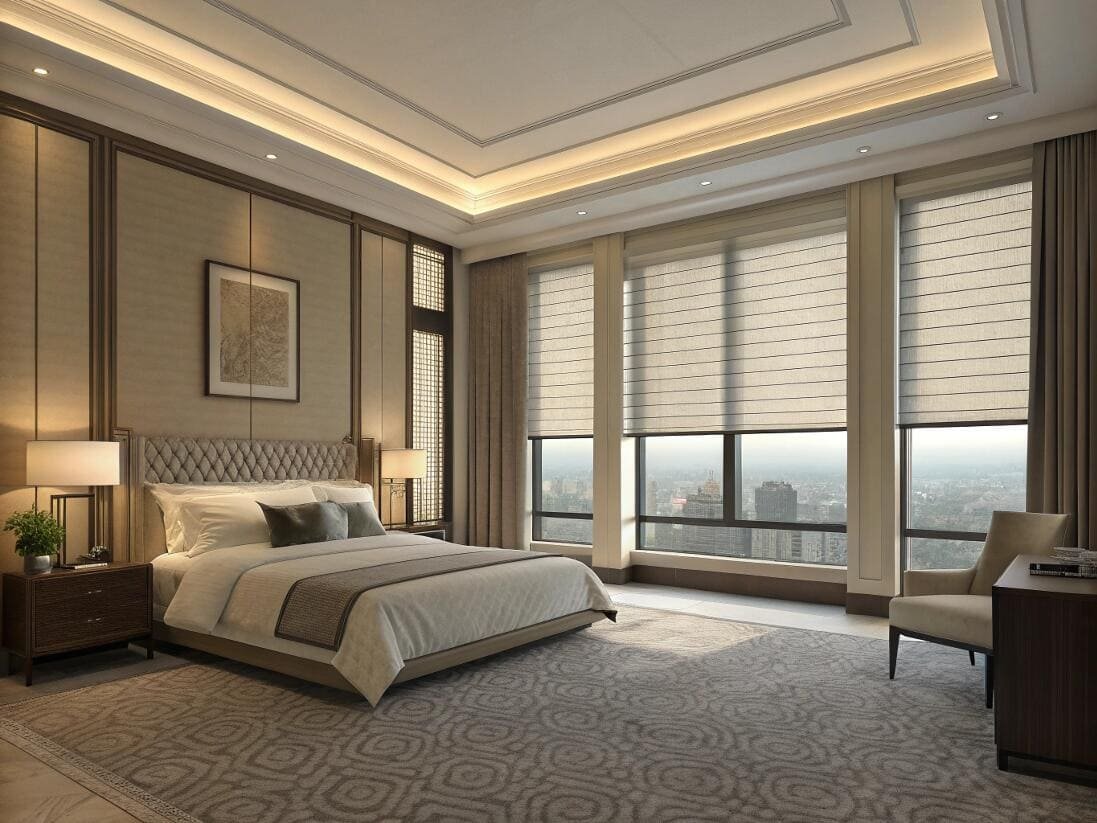
When it comes to acoustics, not all blinds are created equal. The clear winner is the cellular or honeycomb shade. The magic is in the structure. The honeycomb-shaped cells create dozens of small air pockets. When sound waves from outside hit the blind, they get trapped and dampened within these pockets. This structure is far more effective than a single solid layer.
Based on my experience and testing, here is the performance hierarchy for sound-reducing blinds:
- 45mm Double-Cell Honeycomb Shades: The top performer. The double layer of cells provides maximum air-trapping capability.
- Thick Roman Shades: A good option if the fabric is dense (at least 0.8 kg/m²). The thickness helps, but it lacks the air-pocket structure of honeycomb.
- Zebra Blinds with a Foam Layer: Some newer designs incorporate a thin foam layer, which adds a bit of sound dampening.
Standard aluminum or wood blinds are generally poor for soundproofing due to the gaps between the slats, which let sound pass through easily. They are only effective if you add side channels to seal these gaps.
Do thick curtains really reduce noise?
It's a common belief that a heavy, thick curtain is a great soundproofing tool. But how much of a difference does adding more fabric actually make?
Thick curtains do reduce some high-frequency noise, but their overall impact is minimal, often only improving sound levels by 1 to 2 decibels (dB). They are not an effective solution for low-frequency traffic rumble.
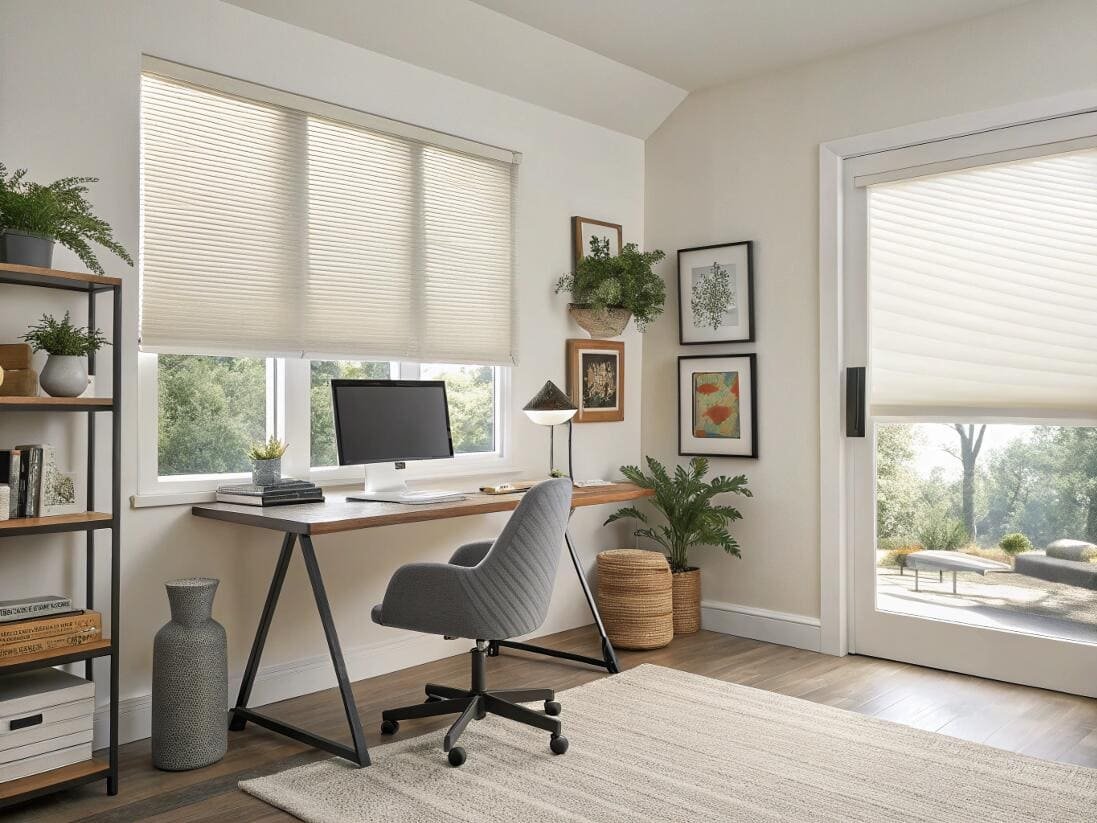
This is one of the biggest misconceptions in window treatments. While a thick, heavy fabric feels like it should block a lot of sound, it primarily works on the principle of density alone. It lacks the other two critical elements: air pockets and a seal. Because of this, it can slightly muffle sharp, high-pitched sounds, but it does very little to stop the low-frequency vibrations from traffic or construction. The actual measured improvement is often just 1 or 2 dB, a difference that is barely perceptible to the human ear.
There's also a point of diminishing returns. My own research shows that once a fabric's weight goes above 380 grams per square meter, making it even thicker adds less than half a decibel of noise reduction. At that point, your budget is much better spent on a system with a better structure, like honeycomb cells, and on adding seals to block noise leaks.
What makes a blind truly "soundproof?"
The word "soundproof" is a strong claim. Can a window treatment truly eliminate all outside noise, and what are the key components to achieve maximum performance?
No blind is 100% soundproof, but you can achieve significant noise reduction. This is done by combining a high-performance blind with installation upgrades like side, top, and bottom seals to block sound leaks.
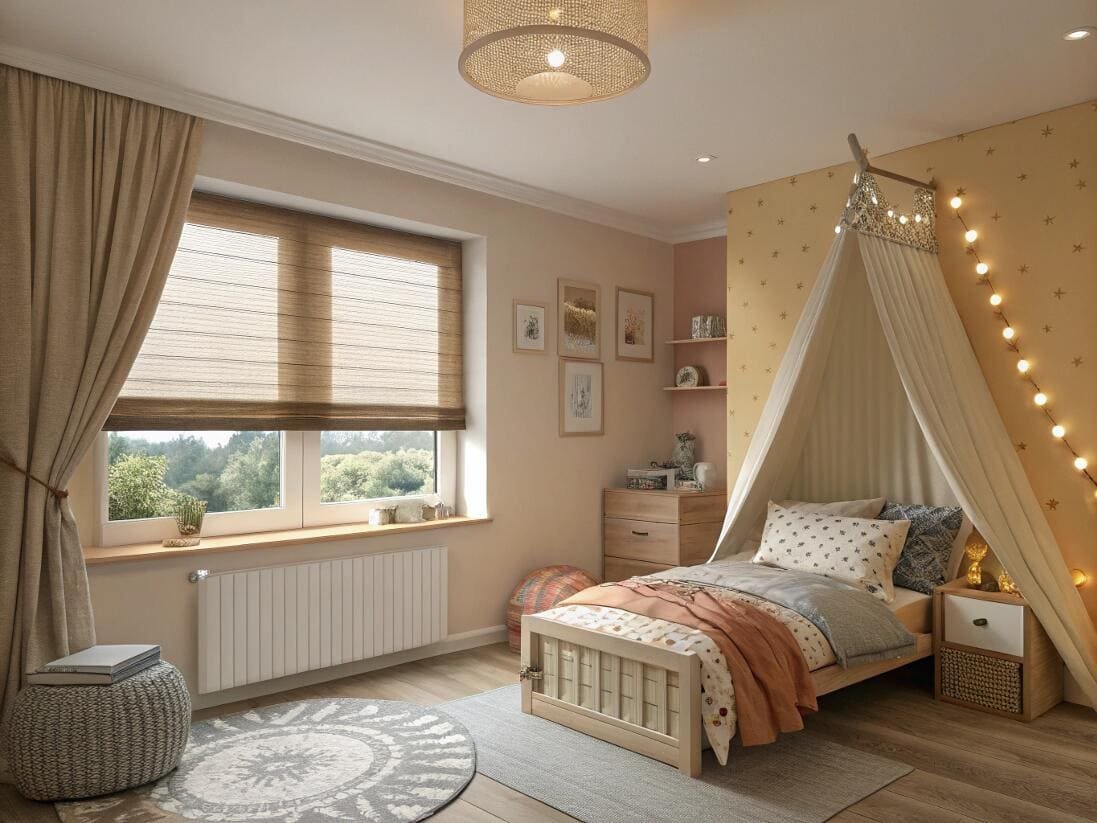
The biggest weakness of any window treatment is not the material itself, but the gaps around it. Sound is like water; it will find any crack to leak through. You can have the best acoustic material in the world, but if there are gaps on the sides, top, or bottom, noise will pour right in. This is where installation upgrades become critical.
To create a truly effective acoustic system, you need to specify a complete seal. This typically includes:
- Side Channels: These are U-shaped tracks that the blind fabric slides into. They completely eliminate the light gaps on the left and right sides, which are major culprits for sound leaks.
- Top Cassette/Valance: This covers the top roller mechanism, preventing sound from leaking over the top of the blind.
- Bottom Seal: A bottom rail with a built-in weatherstrip or brush seal creates a tight connection with the windowsill when the blind is closed.
By combining a double-cell honeycomb blind with a full seal system, you can achieve a real, noticeable sound reduction of 4 to 6 decibels.
How do you measure sound reduction in blinds?
When a supplier gives you technical data, you see confusing acronyms like STC and NRC. How can you translate these into a simple benefit that your client can understand?
Focus on the decibel reduction, or ΔdB. This is the most practical metric, telling you exactly how many decibels quieter the room will become. A 3 dB drop is noticeable, while a 10 dB drop feels like half the noise.

It's easy to get lost in technical jargon. Let's simplify the three main acoustic ratings you might see.
| Metric | What It Measures | What It Means for You |
|---|---|---|
| STC (Sound Transmission Class) | How well a material blocks sound from passing through. | Higher is better. This is a common rating for walls and windows, but it doesn't account for sound leaking around the edges of a blind. |
| NRC (Noise Reduction Coefficient) | How well a material absorbs sound, reducing echo inside a room. | A score from 0 to 1. Higher is better for reducing echo, but it's not the main goal for blocking outside noise. |
| ΔdB (Decibel Reduction) | The actual difference in sound level with and without the product. | This is the most important number. If a product offers a 6 dB reduction, a 50 dB street noise becomes a much more comfortable 44 dB. |
When you talk to your clients, use the ΔdB value. It's a simple, powerful way to explain the benefit. Telling a client, "This system will make your bedroom 6 decibels quieter," is much more effective than talking about STC ratings.
When does spending more on soundproofing stop paying off?
Your client wants the quietest room possible, but their budget isn't unlimited. How do you recommend a solution that delivers the best sound reduction for the money?
The most significant gains in soundproofing come from upgrading to a honeycomb blind with a full seal system. Spending more beyond this point offers very little additional benefit and is usually not cost-effective.
There is a clear "sweet spot" in acoustic window treatments. The jump from a standard roller blind to a double-cell honeycomb shade with side channels is where you get the most bang for your buck. For an added cost of around $40 per window, you can achieve a tangible 6 dB noise reduction. For a client whose bedroom is exposed to 48 dB of nighttime traffic noise, bringing that down to 42 dB makes a huge difference in sleep quality. This is an investment that can pay for itself in under 18 months through higher rental income or property resale value.
Could you spend more? Of course. You could look for triple-cell fabrics or custom-engineered solutions. But the incremental gain is tiny. You might spend twice as much for only one or two extra decibels of reduction. For almost every residential and most commercial projects, the cost-effective, high-performance solution is a double-cell honeycomb blind with a complete seal.
What is the quick spec checklist for sound-reducing blinds?
You're ready to order for a project and need to make sure you get everything right. What are the key specifications you must include in your purchase order?
Your spec sheet must be precise. Specify a double-cell honeycomb fabric for its structure, request a blackout material for density, and always include a full U-channel system for a complete seal.
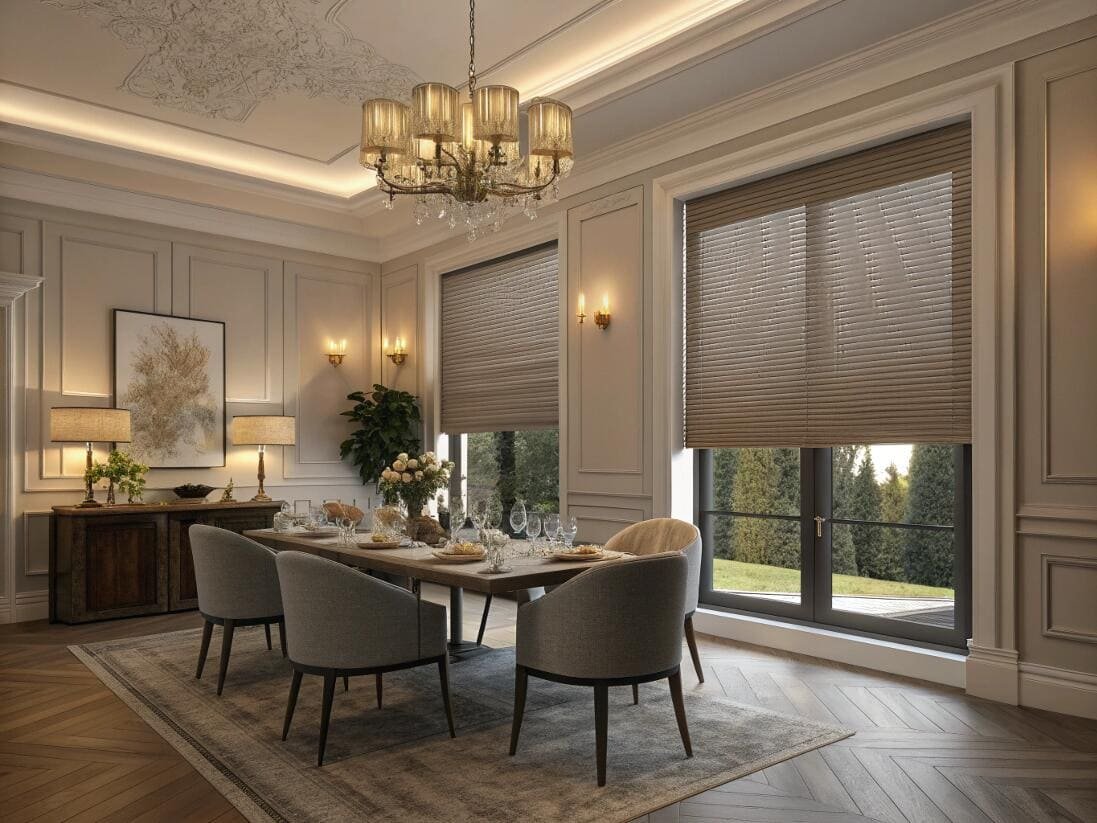
To ensure you get the acoustic performance your client expects, your order needs to be crystal clear. Use this checklist when communicating with your supplier. This is the exact list I give to my partners to eliminate any confusion.
- Product Type: Double-Cell Cellular (Honeycomb) Shade
- Cell Size: 45mm or larger for optimal air pocket volume.
- Fabric Type: Blackout / Light-Blocking. This ensures the highest possible material density.
- Sealing System: Must include a full "U-Channel" or "Side Channel" system for the left, right, top, and bottom of the blind.
- Acoustic Goal (Optional): Specify the target noise reduction (e.g., "Must provide a minimum of Δ5dB reduction").
- Control Mechanism: Cordless or Motorized (This doesn't affect sound, but it completes the premium, high-performance package).
By using this checklist, you are specifying a complete acoustic system, not just a blind. This precision ensures you deliver the peace and quiet your clients are paying for.
Conclusion
Effective sound reduction is a science. By focusing on honeycomb structures and complete sealing systems, you can offer clients a solution that provides real, measurable quiet and a significant return on investment.

